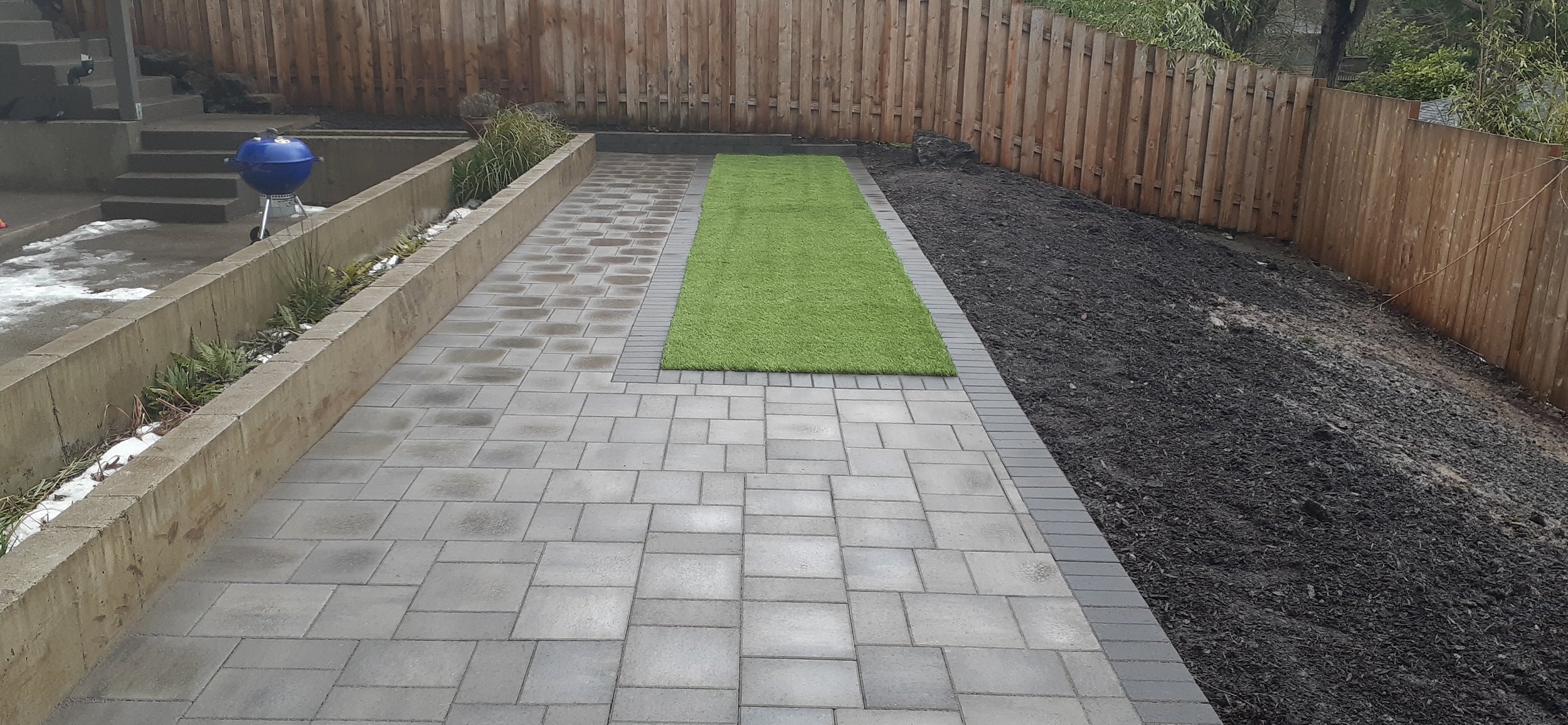
Frequently Asked Questions
Is work limited to summer weather?
No! J Built works year-round. Weather can create interesting situations, but J Built is versed in how to maneuver adverse weather.
(Check out this process video, where the bulk of the foundation patio work—including a french drain and flow well—was done during a torrential downpour!)
What do I need to consider when planning my outdoor kitchen or patio?
Location
Not only the physical location, but also:Will drainage be a concern? (i.e. will your patio be near a slope, what does the surrounding landscape look like etc.)
What are the sunshine/shade needs?
Does it need to be adjacent to the house?
Size, Shape and Material
Patios can be any size or shape and made out of a variety of materials, such as concrete pavers, brick, decomposed granite or natural stone (which have natural edges or be cut into modern paver shapes)Use
Lounging, Cooking, Dining, GatheringLighting
Landscape lighting enhances outdoor areas with a soft ambiance and provides an unobtrusive safety and security feature to the space. When deciding what type of lighting to choose, and where to have it installed, think about:Functional and accessible lighting for pathways and steps
Feature lighting to uplight trees or accent pergolas
Ambiance lighting for social gathering and special events
Safety lighting
Fireplace or Fire Pit
When adding a fireplaces and/or fire pits, think about what type of fuel you want to use (i.e. gas or wood), as well as how you and your guests will gather around the fire (i.e. built-in stone seating walls, chairs, couch arrangements or a combination).Outdoor Kitchen
What components do you want in your kitchen?Function and usability features: BBQ, fireplace, pizza oven, fridge and sink
Shape: L-shape, U-shape or linear with a bar
Social Component: Is there a fireplace or TV focal point?
What kind of seating or dining arrangements are there: chairs, couches or high bar stools?
Maintenance
Pricing
How are stone patios built?
There are two ways that stone patios are typically built, J Built utilizes both methods:
Dry Laid
This is when pavers are laid directly on a bed of compacted sand or crushed stone. The pavers are placed tightly together, then sand is added by sweeping it between the joints.Mortared
This method sets the stones in concrete mortar, and also has a bed of crushed stone underneath.
How do I clean and maintain my patio?
Here are a few general tips to keep your patio looking it’s best.
Sweep Regularly
This will keep the day-to-day dirt and debris at bay. (Prolonged exposure to dirt can stain flagstone.)Keep Off Excess Water
Water can weather and discolor stone, as well as lead to mold and/or mineral buildup.Clean With Warm Soapy Water
Scrub your pavers with warm, soapy water and rinse with a garden hose.Note: Vinegar is acidic and reacts with natural stone, it can cause etching and staining—make sure you clean with a stone-specific cleaner, and always test in an inconspicuous area.
Avoid Salt
If you need to de-ice in the winter, avoid using salt on your pavers, which can cause staining, cracking and even disintegration of the stone. Instead of salt, sand is recommended for traction on the patio.Re-Sand Joints
For maintenance, every few years you will want to re-sand the joints.Re-Sealing Stone
In addition to re-sanding the joints, you will want to re-seal, especially in high-use areas. Sealing helps with durability and prevents staining if you have spills (like areas around the grill, or if you spill a glass of red wine).
